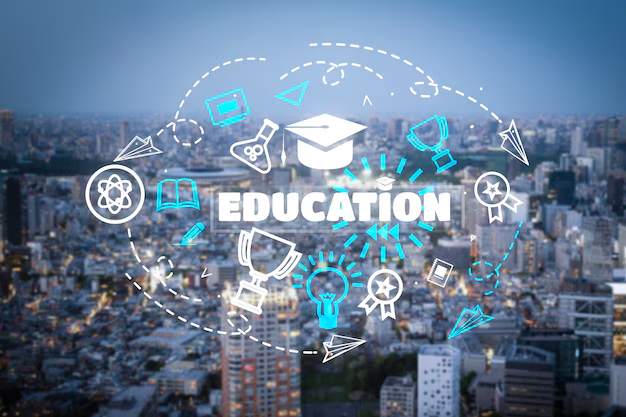Education is continuously evolving to meet the needs of an ever-changing world. As society and technology advance, traditional methods of teaching are being reimagined to better prepare students for the future. Innovation in education not only provides fresh ways to deliver content but also aims to develop essential skills like critical thinking, creativity, and collaboration that are crucial for success in the 21st century.
In this article, we explore some of the most innovative approaches to education and how they are shaping the minds of tomorrow.
1. Personalized Learning
Personalized learning is an approach that tailors education to each student’s individual strengths, needs, and interests. This method recognizes that every learner is unique and learns at their own pace. By leveraging technology, teachers can create customized learning experiences for students, allowing them to progress based on their abilities rather than age or grade level.
One of the most prominent examples of personalized learning is the use of learning management systems (LMS) and educational apps, which adapt to the pace and learning style of each student. Tools like Khan Academy and DreamBox provide individualized lessons that cater to the learner’s current understanding, ensuring that students are challenged but not overwhelmed.
2. Gamification in Education
Gamification is the integration of game-like elements, such as scoring systems, badges, and rewards, into the learning process. It makes education more engaging and interactive, motivating students to take ownership of their learning while encouraging a sense of achievement.
Rather than simply reading textbooks or attending lectures, students can immerse themselves in educational games that help them develop problem-solving skills, teamwork, and resilience. For example, platforms like Duolingo use gamified elements to make language learning fun and competitive, allowing learners to track their progress and compete with others.
Gamification not only increases motivation but also enhances retention. It promotes active learning by engaging students in experiences that are dynamic, interactive, and rewarding, making the educational process much more enjoyable.
3. Project-Based Learning (PBL)
Project-based learning (PBL) focuses on learning through the completion of real-world, hands-on projects. In PBL, students actively explore complex questions, problems, or challenges over an extended period, working in teams to come up with creative solutions. This approach encourages deep learning and helps students develop essential skills such as critical thinking, teamwork, and communication.
Through PBL, students apply their knowledge to practical scenarios, which not only makes learning more meaningful but also prepares them for real-world situations. For instance, students might work on designing a sustainable product or researching ways to reduce environmental impact in their local community. This approach not only enhances academic knowledge but also nurtures creativity, problem-solving, and collaboration—skills that are crucial in today’s workplace.
4. Flipped Classroom
The flipped classroom model is a reverse approach to traditional teaching. In a flipped classroom, students engage with instructional content outside of class time, typically through pre-recorded videos or reading assignments. The in-class time is then dedicated to active learning activities such as discussions, problem-solving exercises, and group work.
This model allows teachers to move away from traditional lectures and provides more opportunities for hands-on, collaborative learning. The flipped classroom promotes deeper understanding by encouraging students to engage with the content beforehand and then apply what they’ve learned during class time. Tools like Edpuzzle and Flipgrid facilitate this type of learning by allowing teachers to create interactive lessons and discussions.
5. Technology-Enhanced Learning
Technology has become an essential tool in modern education. From interactive whiteboards to virtual and augmented reality, technology enhances the learning experience in countless ways.
Virtual Reality (VR) and Augmented Reality (AR), for example, provide immersive experiences that allow students to explore historical events, scientific concepts, or geographical locations in ways that would be impossible in a traditional classroom. Students can take virtual field trips to outer space, explore ancient civilizations, or conduct lab experiments without leaving the classroom.
In addition to VR and AR, Artificial Intelligence (AI) is increasingly being used to create intelligent tutoring systems and personalized learning pathways. AI-powered platforms can assess students’ strengths and weaknesses, offer targeted feedback, and guide them through the learning process.
6. Mindfulness and Social-Emotional Learning (SEL)
Mindfulness and social-emotional learning (SEL) are becoming essential components of innovative education. These approaches focus on developing students’ emotional intelligence, resilience, and empathy, which are crucial for their overall well-being and success.
Mindfulness practices, such as meditation and breathing exercises, help students manage stress and improve concentration. SEL, on the other hand, helps students develop self-awareness, self-regulation, social skills, and decision-making abilities. By integrating mindfulness and SEL into the curriculum, schools can foster a healthy, supportive learning environment where students can thrive academically, emotionally, and socially.
7. Hybrid and Remote Learning
The COVID-19 pandemic accelerated the adoption of hybrid and remote learning models, and these approaches are likely to remain a significant part of education in the future. Hybrid learning blends in-person and online instruction, offering students flexibility and personalized learning opportunities. Remote learning, which relies on digital tools and platforms, enables students to learn from anywhere, breaking down geographical barriers to education.
Platforms like Google Classroom, Zoom, and Microsoft Teams have become integral to remote and hybrid learning, providing teachers and students with the tools to interact, collaborate, and share resources online.
FAQs on Innovative Approaches to Education
- What is personalized learning? Personalized learning tailors education to each student’s individual needs, strengths, and interests, often through technology-based tools.
- How does gamification benefit learning? Gamification makes learning more engaging and interactive by using game-like elements such as rewards and points, motivating students to stay engaged and learn more effectively.
- What is project-based learning (PBL)? PBL is an approach where students work on real-world projects over time, fostering critical thinking, collaboration, and problem-solving skills.
- What is the flipped classroom model? The flipped classroom model reverses traditional learning by having students learn content at home (through videos or reading) and then applying that knowledge in class through interactive activities.
- How can technology improve education? Technology enhances learning through tools like virtual reality, augmented reality, AI, and online learning platforms that create interactive, immersive, and personalized educational experiences.
- Why is social-emotional learning important? SEL helps students develop emotional intelligence, empathy, and resilience, which are essential for their personal growth and success in school and life.
- What is hybrid learning? Hybrid learning combines in-person and online instruction, offering students flexibility and a more personalized learning experience.
Conclusion
Innovative approaches to education are revolutionizing the way we teach and learn. From personalized learning and gamification to project-based learning and technology-enhanced tools, these approaches are preparing students for the challenges of tomorrow. As technology and educational methods continue to evolve, we can expect further changes that make learning more engaging, inclusive, and accessible to all students, ultimately shaping the minds of the future.
Key Takeaways
- Innovative education approaches, such as personalized learning, gamification, and project-based learning, are enhancing student engagement and success.
- Technology is playing a central role in transforming education, making learning more interactive, personalized, and immersive.
- The flipped classroom model and hybrid learning offer more opportunities for hands-on, collaborative, and flexible learning experiences.
- Social-emotional learning (SEL) and mindfulness practices are integral to students’ overall well-being and academic success.



